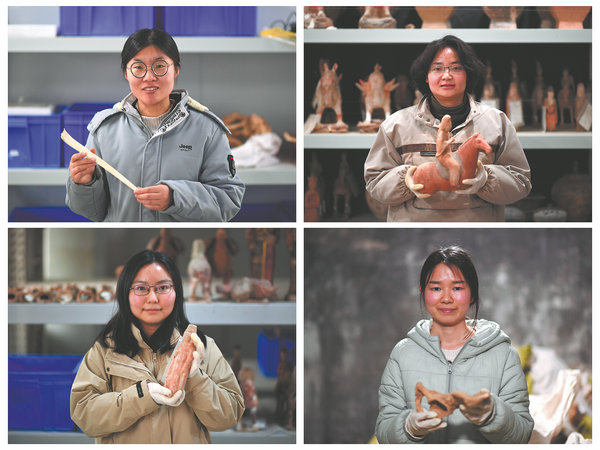

Hunching over with shovel in hand, 30-year-old Zhu Yingpei is at work in a newly excavated tomb in Xianyang in Northwest China's Shaanxi province. She is accompanied by a group of female archaeologists.
Pointing to bones and relics in a coffin, Zhu says the tomb belonged to an ordinary person during the Western Han Dynasty (206 BC-AD 24). "We cannot find the occupant's name, but we can catch a glimpse into the daily lives of people over 2,000 years ago."
Digging in soil, carefully brushing away dust, revealing the appearance of ancient artifacts, and meticulously documenting findings constitute the daily tasks of the Jinghe River archaeological team from the Shaanxi Academy of Archaeology.
For team leader Zhu, archaeology intertwines seriousness with a sense of romance. She vividly recalls excavating a tomb adorned with pottery figurines frozen in dancing gestures, as well as discovering pottery ware like kitchen utensils and vessels for alcohol.